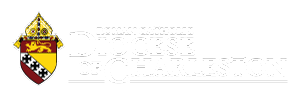The Diocese of Charleston was established by Pope Pius VII on July 11, 1820. Its first shepherd was Bishop John England, who was born in Cork, Ireland. At the time of his appointment to the Diocese of Charleston he was parish priest at Bandon, a town about 16 miles from Cork. He was consecrated bishop in St. Finbar’s Church in Cork on September 21, 1820, and arrived in Charleston December 30, 1820.
When Bishop England came to Charleston, James Monroe was President of the United States, Thomas Bennett was Governor of South Carolina and Elias Horrey was Mayor of the City of Charleston. The new diocese of 142,000 square miles was spread over three states, North Carolina, South Carolina and Georgia. There were two churches, one in Charleston and one in Augusta, GA., only six priests were available to serve the handful of scattered Catholics.
It is believed that Masses were celebrated in the area by Spanish priests, perhaps as early as 1526, but no records exist to verify this. We are told by a genealogist that Catholics came into various sections of South Carolina before 1750, and there is an undocumented tradition that in the upstate there was a French priest who, once a year, made a trip on horseback from Canada to New Orleans in the fall and returned in the spring. He would stop along the way and say Mass in the Catholic homes.
Bishop England wrote that “sometime about the year 1786, a vessel bound to South America put into the port of Charleston. There was a priest on board; as well as can be recollected, he was an Italian. The few Catholics, who now began in the city to be acquainted with each other … invited him to celebrate Mass, which he did in the house of an Irish Catholic for a congregation of about twelve persons.” This might be marked as the introduction of the Catholic religion to the present Diocese of Charleston.
St. Mary of the Annunciation Church on Hasell Street in Charleston was the first Catholic church in the Carolinas and Georgia, an area now comprising five dioceses. It was permanently established on August 24, 1789, by the Rev. Thomas Keating. It was incorporated by an act of the legislature of South Carolina in 1791, and was well established when the Diocese of Charleston was created by a Papal brief, and when Bishop England arrived in December of that year.
Prior to the establishment of the Diocese of Charleston and the coming of Bishop England, the Catholic Church of the Carolinas and Georgia was part of the Archdiocese of Baltimore and was under the jurisdiction of the Archbishop of Baltimore.
Four other dioceses have since been made from the original territory included in the Diocese of Charleston. The Diocese of Savannah was carved out in 1850. In 1956 that diocese was split into two parts with the creation of the Diocese of Atlanta which, in 1962, was elevated to the status of archdiocese and became the metropolitan see of the Province of Atlanta. North Carolina was made into a Vicariate Apostolic in 1868 and some 56 years later became the Diocese of Raleigh. In 1972 the Diocese of Raleigh was divided into two by the creation of the Diocese of Charlotte. In 1858 the Diocese of Charleston assumed jurisdiction over the Bahama Islands, but this was relinquished in 1885. Today the Diocese of Charleston comprises the entire state of South Carolina with Charleston as the See city.
Bishop Jacques Fabre-Jeune, CS, was ordained and installed as its 14th ordinary on May 13, 2022.
From its beginnings in 1820 until the present, the diocese has developed slowly but surely under the devoted leadership of its bishops:
| Bishop | Service |
|---|---|
| John England | (1820-1842) |
| Ignatius A. Reynolds | (1844-1855) |
| Patrick N. Lynch | (1858-1882) |
| Henry P. Northrop | (1883-1916) |
| William T. Russell | (1917-1927) |
| Emmet M. Walsh | (1927-1949) |
| John J. Russell | (1950-1958) |
| Paul J. Hallinan | (1958-1962) |
| Francis F. Reh | (1962-1964) |
| Ernest L. Unterkoefler | (1964-1990) |
| David B. Thompson | (1990-1999) |
| Robert J. Baker | (1999-2007) |
| Robert E. Guglielmone | (2009-2022) |
| Jacques Fabre-Jeune, CS | (May 13, 2022) |

